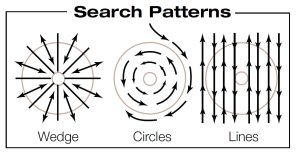Breast and Axilla
Assessment – Breast and Axilla
Breast Assessment Female
Inspection
During female breast inspection, the patient is seated facing the examiner. Inspection of the breasts is required to be completed in four separate patient positions:
- Hands at the patient’s sides
- Hands above the patient’s head
- Patients’ hands pressed against the hips
- Patient leaning forward
In each of the four positions, as noted above, the examiner will compare both breasts and axilla and note the following:
- Redness, color changes, any thickening or enlarged pores.
- Size, symmetry, contours, and any retraction or dimpling
- Nipple size, shape, direction, any rashes, ulcers, discharge, or inversion
Palpation
The patient is lying supine with the ipsilateral hand behind the head. The examiner will palpate for:
- Palpate for consistency, tenderness, or nodules using a systematic approach such as a wedge or spoke pattern, a circular pattern, or a vertical or horizontal strip pattern palpate in small, concentric circles with 2nd, 3rd, and 4th finger pads to completely palpate the breast.

Figure 6.2 Hand (Prykhodov, 2013).
2. Palpate the nipple gently to assess elasticity.

Breast Assessment Male
Inspection
The male patient is assessed in one position, seated facing the examiner. The examiner notes any breast nodules, swelling, ulcerations, or gynecomastia.
Palpation
The patient is seated or supine.
- Palpate areola and breast tissue for nodules
- Palpate to distinguish glandular enlargement from soft fatty enlargement of obesity (this technique is used for enlarged breasts and/or obese patients)
Axilla Assessment Male and Female
Inspection
- Inspect for rash, lesions, masses, or unusual pigmentation
Palpation
The patient is sitting or supine with arms relaxed by their sides. Throughout the exam, note any enlarged nodes for size, shape, consistency, mobility, and tenderness.
- Palpate central lymph nodes
- Using a slightly cupped hand, the examiner places the tops of fingers in the apex of the axilla, pointing towards the mid-clavicle line, presses inwards against the chest wall, and slides the hand down (use the left hand to examine the right axilla and the right hand to examine the left axilla).
- Palpate the pectoral lymph nodes
- Grasp the anterior axillary fold between the thumb and fingers and palpate inside the border of the pectoral muscle
- Palpate the lateral lymph nodes
- Palpate high in the axilla and feel along the upper humerus
- Palpate the infraclavicular and supraclavicular lymph nodes
- Infraclavicular nodes are just below the clavicle bilaterally, and supraclavicular nodes are just above.
Video
VIDEO 6.1
Breast Assessment
Examination Checklist
Printable 6.0
Printable 6.1
Documenting Assessment Findings
Breasts are symmetrical, the shape is pendulous, and there are no scars or deformities. The skin texture is soft and nodular; there are no masses, and the nipple and areolar structures are brown in color, everted, and absent of discharge. The skin is soft; there is no redness, no open sores, peau d’orange appearance, and the skin surface is neither too dry nor too moist. There is no edema present.

